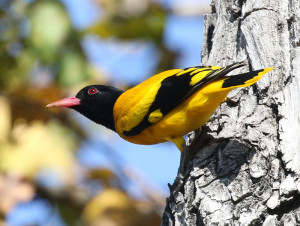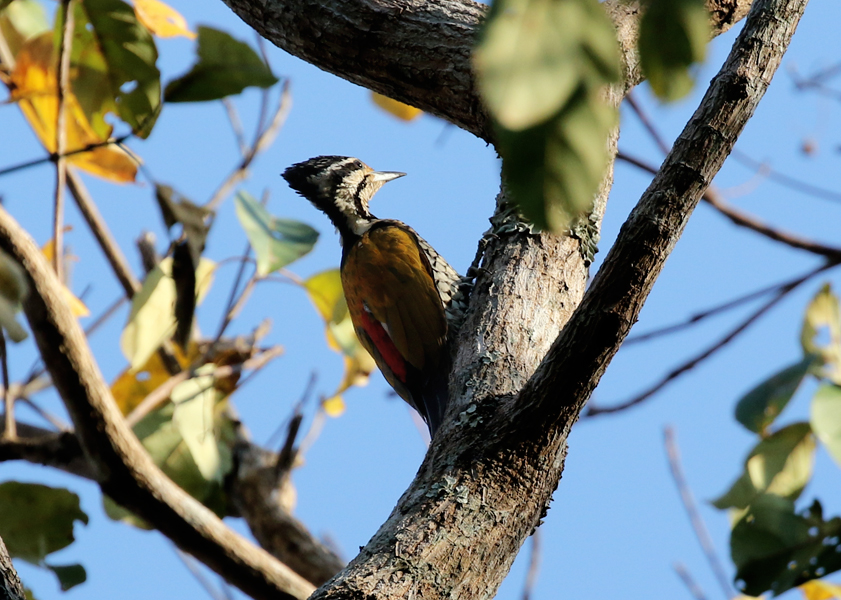
As part of a recent birding tour I led in January/February we made a visit to Mae Ping National Park in Lamphun province, Thailand. This site consists mainly of dry dipterocarp woodland which has little variation within it, with only a few pine trees and damp gullies providing any other vegetation types, meaning that avian biodiversity is quite low compared to other habitats in the region, however, it does contain a good number of habitat specialists including a good range of woodpeckers.
Although the birding was a little slower than expected we ended our time at Mae Ping having enjoyed some really stunning birds including a pair of White-rumped Falcons, Collared Falconet, White-bellied Woodpecker, Burmese Nuthatch, Black-headed Woodpecker, Rufous Woodpecker, White-crested Laughingthrush and Red-billed Blue Magpie.
I was lucky to get a tip off from a friend about where to find a pair of White-rumped Falcons and it did not take us long after arrival for us to locate these birds, getting excellent and prolonged views of both the male and female.
These views were excellent but our observation of Collared Falconet was amazing, with it sitting in a tree close to us for a long period of time before it pounced on some prey right next to my foot before disappearing to eat it.
There were a few other raptors over the last few days at Mae Ping too including two soaring Shikras and a couple of flyover Oriental Honey-buzzards.
Many birds at Mae Ping were quite flighty so were quite tricky to view let alone take photos of but extremely close flypast views of the magnificent White-bellied Woodpecker were great as were some agitated Black-headed Woodpeckers. We also saw Lesser Yellownape, Greater Yellownape, Greater Flameback, Black-headed Woodpecker, Rufous Woodpecker and many Grey-capped Pygmy Woodpeckers but the only one I got a shot of was Common Flameback.
One bird which was very obliging was Black-hooded Oriole. We saw a good number of these colourful characters and watched one individual catch and dispatch a big hairy caterpillar. Not only are these birds attractive to look at they have a nice, musical call and in the early morning at Mae Ping we heard plenty of them.
Black-hooded Oriole was not the only colourful and vocal bird we saw at Mae Ping. In the early morning we came across a few Burmese Nuthatches, calling from the very tops of tall trees as well as several flocks of very garrulous White-crested Laughingthrushes and we eventually got good views of Red-billed Blue Magpie which amused us with some excellent mimicry.
While we found some really good birds, abundance was generally low and in particular smaller birds such as woodshrikes and minivets were just completely absent. We did see Purple Sunbird, Olive-backed Sunbird and Scarlet-backed Flowerpecker in a flowering tree though.
Although common it took us quite some time before we managed to get good views of Grey-headed Parakeet perched but as we were leaving we found a small flock of birds that included Indochinese Cuckooshrike which gave us very good views.
Mae Ping is always a good place for some key habitat specialists but at times it can be very hot and bird abundance can be low, just as we witnessed at the beginning of February. You can find information on bird watching at this location here – Mae Ping National Park.


 February 26th, 2019
February 26th, 2019  Nick
Nick 







 Posted in
Posted in  Tags:
Tags: 










